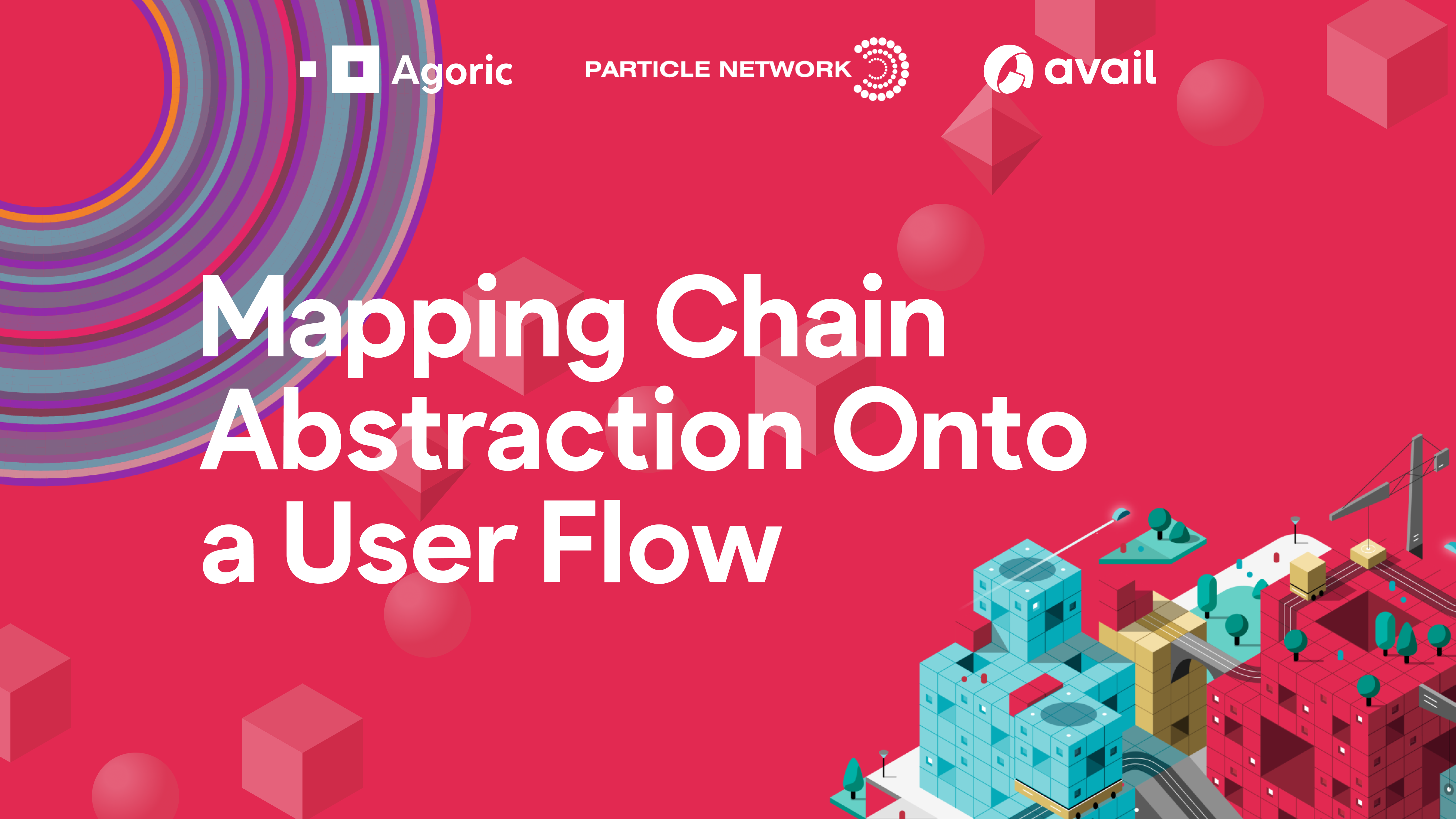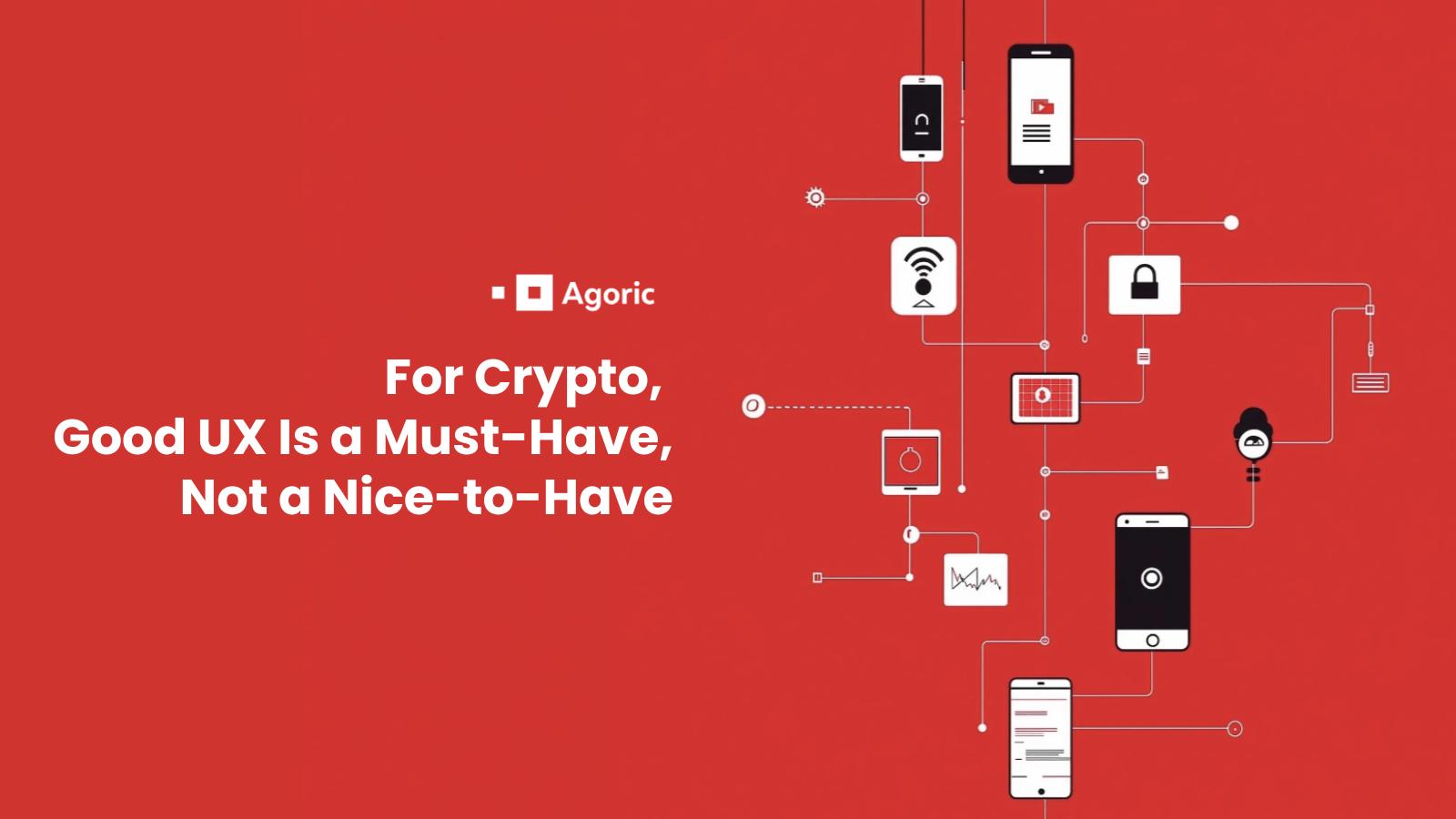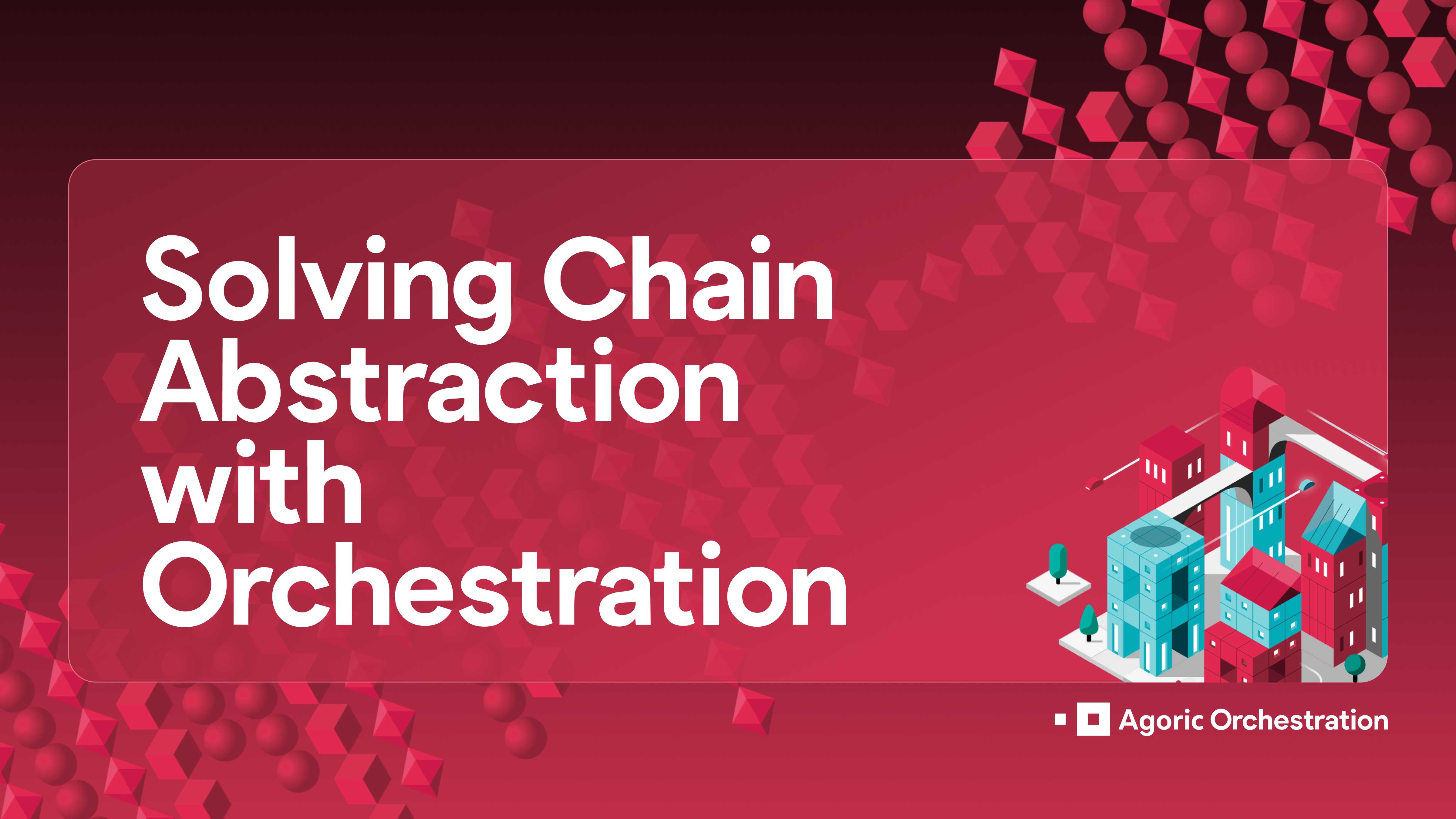– Special thanks to the Particle Network and Avail teams for their collaboration and input on this piece.
The growing momentum behind chain abstraction and related topics like orchestration is indicative of an industry-wide shift towards putting more emphasis on user experience: web3 is now a vibrant enough ecosystem that protocols and applications with the best UX will succeed over their competition. This will only prove truer over time as consumers continue to explore the industry and naturally gravitate to the most immediately accessible experiences, making chain-abstraction solutions a key driver for user adoption and long-term success. The most effective chain abstraction experiences will feel comprehensive, maintaining all necessary features while distilling each action down to its essential elements.
For developers and product managers, improving user experience is a constant process to meet evolving user needs and market expectations. As web3 permeates further into mainstream society, the advent of technologies such as Sign-in with Ethereum and account abstraction have led the way in an industry-wide UX renaissance. The most recent of these evolutions is chain abstraction –aimed at addressing the significant friction and fragmentation present when interacting with applications across chains. Chain abstraction frameworks like Frontier’s CAKE or Particle Network’s comprehensiveness spectrum can help designers and developers learn and reason about the concept, but understanding where and how to employ chain abstraction to enhance UX remains challenging by virtue of how young chain abstraction is and how complicated the technical solutions are.
This article aims to walk through the process of identifying key points in an application where chain abstraction solutions at different levels can be used to improve UX. By focusing on these critical touchpoints, developers can transform their applications with more intuitive, efficient, and enjoyable experiences for their users. Building on ideas in this article on Multi-Level Chain Abstraction by Particle Network and Agoric, we’ll explore how chain abstraction can be mapped onto a user flow by conceiving a multi-chain asset manager application that uniquely leverages, and relies on, chain abstraction. We'll highlight how key technologies like Particle Network’s Universal Accounts, Agoric Orchestration, and Avail Nexus can enhance the user experience.
Tech Overview
Particle Network Universal Accounts
Universal Accounts provide users with a single address and balance agnostic to any specific blockchain, giving the user the ability to deposit and use their funds transparently across blockchains as if they were interacting with a single chain.
Read about Universal Accounts
Agoric Orchestration
In web3, orchestration is the capability to coordinate assets and services across multiple blockchains. Agoric Orchestration gives developers unique programming power to combine cross-chain actions to create seamless user experiences.
Learn more about Agoric Orchestration
Avail Nexus
Avail Nexus is a system that allows unified and seamless access to assets and functionality dispersed across multiple chains, while allowing them to remain on their native chains. Furthermore, this unified access is trust-minimized via zero-knowledge cryptographic primitives.
Conceptual Application: Multi-Chain Asset Manager
The mission of this hypothetical abstracted application, Multi-Chain Asset Manager, is to simplify and streamline how users manage their digital assets across various blockchains. By employing chain abstraction, the application can offer a seamless, centralized platform-like experience, permissionlessly and fully on-chain. Users can perform complex multi-chain transactions, swaps, and interact with smart contracts without needing to understand the intricacies of each blockchain involved or spend time manually changing network connections. To better understand how the Multi-Chain Asset Manager achieves its mission, let’s look at key points in the user flow. We can see how chain abstraction is applied to these critical touchpoints to improve the overall user experience.
User Flow Breakdown
Onboarding and Account Creation
Asset Overview and Management
Trading and Swapping Assets
Interacting with Smart Contracts
1. Onboarding and Account Creation
Onboarding new users onto a blockchain platform often requires them to create multiple accounts for each blockchain they wish to use. This involves managing different private keys and navigating through various interfaces, creating a cumbersome experience.
Using Particle Network Universal Accounts, the onboarding process can be drastically simplified. Particle’s account-level chain abstraction solutions allow users to create a Universal Account that acts as an extension of their existing wallet through different mediums (from social logins to connection with even EVM and Bitcoin wallets). This account can then seamlessly interact with multiple blockchains using a central balance and unified address. This reduces the need for multiple accounts and private keys, offering a smoother and intuitive onboarding and management experience.
When a user signs up for the Multi-Chain Asset Manager, they create a Universal Account attached to any wallet. This account then allows the user to interact with the multi-chain asset manager by displaying and pooling their assets from across every chain. From this interface, a user can spend from their aggregated balance as if it were all on one chain–no need to “deposit” anything into the Asset Manager application. This greatly reduces the mental overhead of tracking assets on multiple chains.

2. Asset Overview and Management
The Multi-Chain Asset Manager presents a comprehensive dashboard that aggregates data from various blockchains. This dashboard, powered by orchestration, allows users to monitor their portfolio, track performance, and make adjustments without switching between multiple platforms.
Users often have to juggle multiple wallets and interfaces to view and manage their assets across different blockchains. This fragmentation can lead to a disjointed user experience. Chain abstraction can provide a unified interface for asset management. By abstracting the complexities of different blockchains, users can easily view and manage their assets in one place.
Chain abstraction best practice: displaying Universal balances
Displaying universal balances helps users have a clearer understanding of, and manage their assets across multiple blockchains through a single interface. This makes it easier for new users to keep track of balances across networks, and more efficient for experienced users to leverage the full value of their multi-chain portfolios.
Creating this dashboard involves integrating data from multiple blockchain sources, which requires robust orchestration to manage real-time data flows, a data-availability layer to facilitate transfer, and universal accounts to consume the data feed. The dashboard must be capable of interacting with multiple blockchains simultaneously, pulling data from each, and reconciling this data to present a unified view. This requires API integrations, real-time data processing, and a high degree of reliability to ensure that users have an accurate understanding of their holdings at any given moment.

3. Trading and Swapping Assets
Trading and swapping assets across different blockchains often requires users to navigate multiple exchanges and understand the specifics of each blockchain’s transaction processes. The process can require just as many transactions and signatures (if not more) as different applications.
With the help of Agoric Orchestration, developers can apply the principles of chain abstraction to streamline the trading and swapping process. Agoric Orchestration provides tools for secure and efficient cross-chain transactions, enabling a seamless trading experience.
Chain abstraction best practice: multi-chain operations
Beyond transactions, multi-chain applications need to conduct a broader set of actions across networks, including interacting with smart contracts, data retrieval, or running applications. Chain abstraction solutions implement various ways for applications to automatically switch networks or interact with remote chains when necessary with minimal user intervention required.
The Multi-Chain Asset Manager would allow users to trade and swap assets directly within the app. Leveraging Agoric Orchestration, the application can handle complex multi-chain transactions securely and efficiently, presenting users with a simple and intuitive interface for executing trades. Furthermore, due to the aforementioned usage of Universal Accounts, these workflows of transactions, powered by Agoric Orchestration, can be funded using assets held on any blockchain; in such a scenario, assets could be managed, viewed, and intricately handled as if they were all on one-chain.

4. Interacting with Smart Contracts
Interacting with smart contracts on different blockchains requires users to switch between various wallets and interfaces, making the process fragmented and cumbersome. For developers, designing an application that can easily handle those multi-chain interactions can be just as clunky.
Chain abstraction best practice: condensing interaction flows
A complex, multi-chain procedure or goal (e.g. purchasing an NFT in one chain with assets from another chain) that would otherwise require multiple transactions, signatures, and likely different applications for a user to complete, becomes a single in-UI transaction/signature with chain abstraction.
Account-level abstraction in conjunction with orchestration at the application level and proof-aggregation with Avail Nexus can provide a unified interface for interacting with smart contracts across different blockchains. Users can engage with applications and execute smart contract functions without needing to switch wallets or understand the underlying blockchain interactions.

The Multi-Chain Asset Manager includes an application browser that supports multiple blockchains. Users can explore and interact with smart contracts directly within the app, with chain abstraction ensuring seamless interactions across different blockchain networks. Users can browse web3 applications just like surfing the web today, and perhaps more importantly they can interact with those apps just as easily. With Agoric Orchestration coordinating Particle Universal Liquidity and Gas under the hood, users can freely interact with applications or contracts in which they have no assets and, furthermore, they would also have the ability to pay for gas fees with any token.
Through Agoric and Particle Network’s APIs, developers get a universal set of operations that can reach across chains, abstracting away the need to program low-level commands for each individual network. With these pieces in place, developers can reduce transactions and smart contract interactions down to their essential elements, minimizing the steps users need to take to accomplish their goals.
The Road Ahead for Chain Abstraction and Web3 UX
The adoption of chain abstraction technologies such as Particle Universal Accounts, Agoric Orchestration, or Avail Nexus is essential for creating a more user-friendly and accessible web3 to meet rising user demand. By focusing on improving the user experience, these technologies can drive the broader adoption of Web3, making it more attractive to both novice and experienced users alike. Chain abstraction addresses this by offering solutions that make it easier to hide the technical intricacies from the user, allowing them to focus on their goals rather than the mechanics of blockchain technology.
The integration of Universal Accounts ensures that users can maintain a single identity across multiple blockchains, reducing the need for multiple private keys and streamlining the user experience. Agoric Orchestration further enhances the user experience by enabling complex cross-chain transactions and interactions. This orchestration layer makes it possible for actions performed on one blockchain to seamlessly trigger corresponding actions on another, creating a cohesive and integrated ecosystem. Avail Nexus complements these solutions by providing unified access to assets and functionalities dispersed across multiple chains. This system ensures that assets can remain on their native chains while still being accessible through a single interface.
The future of web3 lies in its ability to provide seamless, intuitive, and efficient interactions, and chain abstraction is a key enabler of this vision. The Multi-Chain Asset Manager serves as a testament to what can be achieved when these technologies are harnessed effectively, offering a glimpse into the future of a more connected and efficient digital landscape.
Watch the live discussion with Agoric, Particle Network, and Avail from Austin.
Stay on the cutting edge of web3 development. Subscribe to the Agoric Developer Newsletter for more on chain abstraction, orchestration, and multi-chain design.
Join us to learn more about orchestration in person around the world, or online at a Welcome to Agoric session!
Want to be the first to try the Orchestration API? Complete the Getting Started tutorial and let us know about your experience on Discord. Our DevRels are happy to help!



